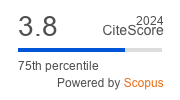Article | Open Access
Reclaiming Urban Spaces: A Systemic Approach to Integrated Pedestrian‐Centric City Design in Rio de Janeiro
| Views: | 3973 | | | Downloads: | 2539 |
Abstract: Quality public spaces, especially pedestrian areas, play an essential role in cities. Communities gather in these spaces and benefit from the proximity to activities in a safe and car‐free environment. Pedestrian areas can have greenery, which helps address the issues raised by climate change. Repurposing existing roads is a priority in many cities worldwide whose aim is to improve their social and environmental performance. This study presents a systemic, data‐based approach that supports the transition from the current pervasive car‐based mobility model to a people‐centric, pedestrian‐based one. This transformative model leverages the structural properties of urban systems to reconfigure streets as integral components of a comprehensive strategy aimed at mitigating the effects of climate change. Image segmentation is used to assess the presence of people in the streets. The numerical evidence provided by metrics and indicators is complemented by visual evidence from local‐scale maps. The proposed method is tested on a portion of Bairro Cidade Nova in Rio de Janeiro within the framework of the Integrated and Sustainable Urban Regeneration Milan–Rio (REMIRIO) project, a city‐to‐city cooperation project between Milan (Italy) and Rio de Janeiro (Brazil) funded by the European Union which aims to implement pilot nature‐based solutions to address local environmental issues such as flooding and overheating. In particular, five North–South streets are compared to define customised pedestrianisation interventions within a more comprehensive super‐block strategy with the aim of improving the continuity of the existing green system and the ecosystem services. This precise network diagnostic process can be easily transferred to any urban system.
Keywords: pedestrian‐centric design; Rio de Janeiro; space syntax; urban mobility
Published:
© Carlo Andrea Biraghi, Hadi Mohammad Zadeh, Andrea Bruschi, Massimo Tadi. This is an open access article distributed under the terms of the Creative Commons Attribution 4.0 license (http://creativecommons.org/licenses/by/4.0), which permits any use, distribution, and reproduction of the work without further permission provided the original author(s) and source are credited.


